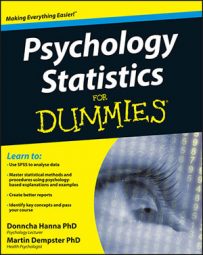When putting together the psychology statistics you need to report when you’re describing a variable in a report, you need to know which of the three measures of central tendency – the mode, median and mean – you should use. Be guided by the advantages and disadvantages of each measure.
Weighing up the advantages and disadvantages of each measure leads you to the following conclusion: the most appropriate measure of central tendency for a variable depends on the level of measurement of the variable and the nature of the distribution of scores within that variable.
Level of measurement: You need to distinguish between three levels of measurement (nominal, ordinal, and interval/ratio) when choosing a measure of central tendency.
Distribution of scores: For the purposes of choosing a measure of central tendency, you need to know whether any extreme scores exist in your data set (often called outliers) or whether the distribution of scores is skewed. When you determine the level of measurement of your variable of interest and whether or not there is skewness and/or extreme scores in your data set then you can determine the most appropriate measure of central tendency, as follows:
Data measured at the nominal level: Of the three measures of central tendency examined in this chapter, the mode is the only appropriate one as the scores cannot be ordered from smallest to largest in a meaningful way.
Data measured at the ordinal level: The mode and the median are appropriate. The median is usually preferable, because it’s more informative than the mode. The scores can be ordered from smallest to largest and this is meaningful, however they cannot be added up so the mean cannot be calculated.
Data measured at the interval/ratio level: All three measures of central tendency are appropriate. The mean is usually preferable. However, the mean isn’t appropriate when extreme scores and/or skewness exist in your data set. In this situation the median is usually best.

